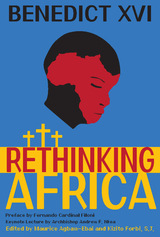15 start with S start with S
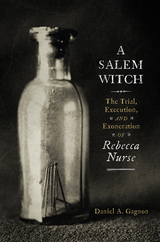
The accusations against Nurse, a well-respected member in the community, seemed unbelievable. Unflinchingly, this ailing elderly woman insisted on her innocence and refused to falsely confess. Supported by many in Salem, Nurse’s family and neighbors challenged her accusers in court and prepared a thorough defense for her, yet nothing could surmount the fear of witchcraft, and she was sentenced to death. Nurse, seen as a martyr for the truth, later became the first person accused of witchcraft to be memorialized in North America.
In A Salem Witch: The Trial, Execution, and Exoneration of Rebecca Nurse, the first full account of Nurse’s life, Daniel A. Gagnon vividly recreates seventeenth-century Salem, and in the process challenges previous interpretations of Nurse’s life and the 1692 witch hunt in general. Through primary source research, he reveals how the Nurse family’s role in several disputes prior to the witch hunt was different than previously thought, as well as how Nurse’s case helps answer the important question of whether the accusations of witchcraft were caused by mental illness or malicious intent. A Salem Witch reveals a remarkable woman whose legacy has transformed how the witch hunt has been remembered and memorialized.
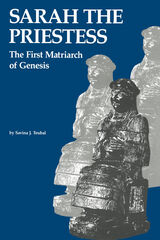
In a patriarchal environment such as the Canaan of Genesis, the situation is discordant and problematic. Dr. Teubal suggests that the difficulty is eliminated, however, if we understand that Sarah and the other matriarchs mentioned in the narratives acted within the established, traditional Mesopotamian role of priestess, of a class of women who retained a highly privileged position vis-a-vis their husbands.
Dr. Teubal shows that the “Sarah tradition” represents a nonpatriarchal system struggling for survival in isolation, in the patriarchal environment of what was for Sarah a foreign society. She further indicates that the insistence of Sarah and Rebekah that their sons and heirs marry wives from the old homeland had to do not so much with preference for endogamy and cousin marriage as with their intention of ensuring the continuation of their old kahina-tradition against the overwhelming odds represented by patriarchal Canaan.
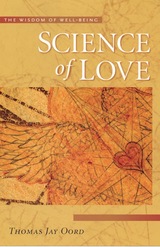
We all know the saying, "Love can change the world." When science looks at love, it considers cosmology, sociobiology, evolutionary psychology, neurology, sex and romance, and the role of emotions as each relates to love. It also explores religious, ethical, and philosophical issues, such as virtue, creation ex nihilo, progress, divine action, agape, values, religious practices, pacifism, sexuality, friendship, freedom, and marriage. All affect the ways in which people understand each other and interact with one another. In this book, Oord explores these varied dimensions of love, illuminating the love-science symbiosis for both scholars and general readers.
His definition of love is "to act intentionally, in sympathetic response to others (including God), to promote overall well-being. Love acts are influenced by previous actions and executed in the hope of attaining a high degree of good for all." He begins his study with an exploration of the role love plays in all major world religions: Hinduism, Buddhism, Confucianism, Judaism, Islam, and Christianity. He explains how divine love in action can be viewed as consonant with the big bang theory and the continual creation of the universe.
He looks at pacifism and concludes that nonviolence is not always the most loving thing (sometimes violence must be used to rescue victims or prevent holocausts). He explores the animal kingdom to see how creatures work together with the Creator to make the world a better place. And he analyzes the fundamentals of love, the basic characteristics of existence that must be present for love to be expressed. He concludes with the important argument that progress can best be made when religion and science work together to both understand and promote love.
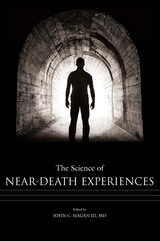
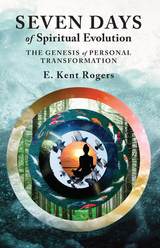
In Seven Days of Spiritual Evolution: The Genesis of Personal Transformation, Rogers responds to a growing movement of biblical literalism by turning to eighteenth-century spiritual teacher Emanuel Swedenborg, who wrote prolifically about how the deeper symbolic meanings of Bible text can provide spiritual guidance. Using Swedenborg’s language of correspondences, Rogers shows us how Genesis 1 describes our psychological landscape as it unfolds along the horizons of our inner journey toward God. He draws insightful parallels between the different stages of our spiritual growth and contemporary psychotherapeutic treatment—from person-centered to cognitive to behavioral therapies. To make the intangible tangible, Rogers accesses what he has learned as both a mental health counselor and spiritual practitioner to offer workable methods for improving how we think and behave on a daily basis.
Intended as a tool for anyone who is interested in personal and spiritual development, Seven Days of Spiritual Evolution weaves psychology, spirituality, and everyday experience into a practical approach to growth. “Faith isn’t about drawing lines in the sand or judging others,” Rogers says, “it’s about learning how to love others and to love God.” Ultimately, it’s about opening our hearts to the Bible as a useful and never-ending guidebook for God’s all-loving, redeeming, and merciful work in the world.
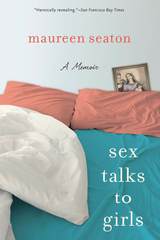
Molly alternately finds herself in the surprising company of winos, swingers, and drag kings; in love with Jesus H. Christ and a butch named Mars; in charge of two children; writing stories that shrink painfully to poems without her permission; and incapable of figuring out how she landed in any of these predicaments. She is, by turns, a little saint, a Stepford wife, a bi-mom, and a femme with super powers. Her transformation—from near-nun to full-fledged sexual being, accidentally becoming conscious in the process and delighting in the spree—is the story of a life set on play and a woman heroically committed to seeing it through.
"The journey toward authenticity, toward becoming whole is made palpable in Maureen Seaton's Sex Talks to Girls: A Memoir. It shines its considerable light on the passage from religion toward faith, from self-medication to sobriety, from daughterhood to motherhood, from being the disembodied 'good girl' to embracing her own bad lesbian self. In crisp chapters, Seaton leads us, step-by-step, over this harrowing and blissful road, so distinct from yet so much like our own."—Terry Wolverton, author of Insurgent Muse: Life and Art at the Woman's Building [permission pending]
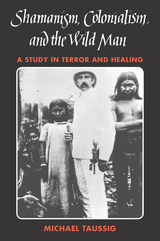
"This extraordinary book . . . will encourage ever more critical and creative explorations."—Fernando Coronil, [I]American Journal of Sociology[/I]
"Taussig has brought a formidable collection of data from arcane literary, journalistic, and biographical sources to bear on . . . questions of evil, torture, and politically institutionalized hatred and terror. His intent is laudable, and much of the book is brilliant, both in its discovery of how particular people perpetrated evil and others interpreted it."—Stehen G. Bunker, Social Science Quarterly
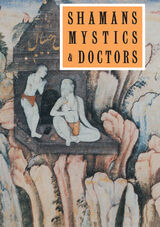
"With extraordinary sympathy, open-mindedness, and insight Sudhir Kakar has drawn from both his Eastern and Western backgrounds to show how the gulf that divides native healer from Western psychiatrist can be spanned."—Rosemary Dinnage, New York Review of Books
"Each chapter describes the geographical and cultural context within which the healers work, their unique approach to healing mental illness, and . . . the philosophical and religious underpinnings of their theories compared with psychoanalytical theory."—Choice
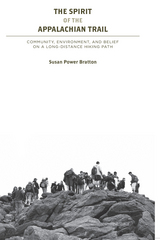
“Want to know what wilderness means to people who live it for over two thousand miles? Then read this extremely interesting, informative, intelligent, and thoughtful book.” —Roger S. Gottlieb, author of Engaging Voices: Tales of Morality and Meaning in an Age of Global Warming
“There is no doubt that Bratton’s book will be of value to students and scholars of leisure studies, recreation, and religion. Those who are familiar with the Appalachian Trail sense intuitively that a journey along its length kindles spiritual awakening; this book provides the hard data to prove it’s true.” —David Brill, author of As Far as the Eye Can See: Reflections of an Appalachian Trail Hiker
The Appalachian Trail covers 2,180 miles, passing through fourteen states from Georgia to Maine. Each year, an estimated 2–3 million people visit the trail, and almost two thousand attempt a “thru-hike,” walking the entire distance of the path. For many, the journey transcends a mere walk in the woods and becomes a modern-day pilgrimage.
In The Spirit of the Appalachian Trail: Community, Environment, and Belief, Susan Power Bratton addresses the spiritual dimensions of hiking the Appalachian Trail (AT). Hikers often comment on how their experience as thru-hikers changes them spiritually forever, but this is the first study to evaluate these religious or quasireligious claims critically. Rather than ask if wilderness and outdoor recreation have benefits for the soul, this volume investigates specifically how long-distance walking might enhance both body and mind.
Most who are familiar with the AT sense intuitively that a trek along its length kindles spiritual awakening. Using both a quantitative and qualitative approach, this book provides the hard data to support this notion. Bratton bases her work on five sources: an exhaustive survey of long-distance AT hikers, published trail diaries and memoirs, hikers? own logs and postings, her own personal observations from many years on the trail, and conversations with numerous members of the AT community, including the “trail angels,” residents of small towns along the path who attend to hikers? need for food, shelter, or medical attention.
The abundant photographs reinforce the text and enable visualization of the cultural and natural context. This volume is fully indexed with extensive reference and notes sections and detailed appendixes. Written in an engaging and accessible style, The Spirit of the Appalachian Trail presents a full picture of the spirituality of the AT.
Susan Power Bratton is professor of environmental studies. She is the author of Six Billion and More: Human Population Regulation and Christian Ethics, Environmental Values in Christian Art, and Christianity, Wilderness, and Wildlife: The Original Desert Solitaire.
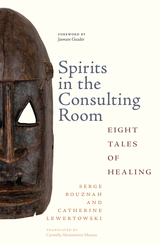
Drawn from two decades of their experience with transcultural mediation, Spirits in the Consulting Room tells the stories of eight patients—mainly migrants—and their families. Each chapter focuses on a different patient, and Christelle, Djibril, Moncef, Alhassane, Jacinthe, Amy, Cyril, Alice, and Pierre leap off the page as distinct people with unique situations. Together, these chapters reveal how patients’ comprehension of their symptoms is shaped by their cultural background, while recounting the challenges of translating that into terms the doctors can grasp.
The book shows how trained transcultural mediators can help to redress the power imbalance between doctors and the migrants they treat, providing patients with advocates who respect the authority of their background and experiences and don’t just take the side of the medical professionals. The groundbreaking insights modeled in this book can be applied to any medical situation where doctors and patients find themselves speaking different languages.
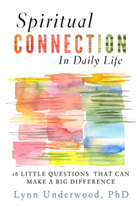
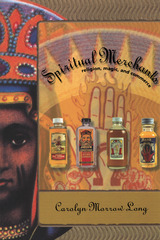
In Spiritual Merchants, Carolyn Morrow Long provides an inside look at the followers of African-based belief systems and the retailers and manufacturers who supply them. Traveling from New Orleans to New York, from Charleston to Los Angeles, she takes readers on a tour of these shops, examines the origins of the products, and profiles the merchants who sell them.
Long describes the principles by which charms are thought to operate, how ingredients are chosen, and the uses to which they are put. She then explores the commodification of traditional charms and the evolution of the spiritual products industry—from small-scale mail order "doctors" and hoodoo drugstores to major manufacturers who market their products worldwide. She also offers an eye-opening look at how merchants who are not members of the culture entered the business through the manufacture of other goods such as toiletries, incense, and pharmaceuticals. Her narrative includes previously unpublished information on legendary Voodoo queens and hoodoo workers, as well as a case study of John the Conqueror root and its metamorphosis from spirit-embodying charm to commercial spiritual product.
No other book deals in such detail with both the history and current practices of African-based belief systems in the United States and the evolution of the spiritual products industry. For students of folklore or anyone intrigued by the world of charms and candle shops, Spiritual Merchants examines the confluence of African and European religion in the Americas and provides a colorful introduction to a vibrant aspect of contemporary culture.
The Author: Carolyn Morrow Long is a preservation specialist and conservator at the the Smithsonian Institution’s National Museum of American History.
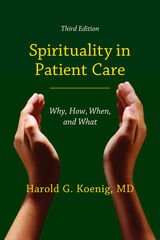
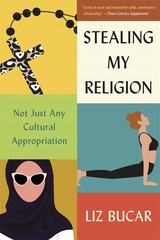
“Lively in style and backed by solid, unobtrusive scholarship…In her call for responsibility in borrowing, Liz Bucar singles out for criticism forms of exploitation close to her own identity as privileged and religiously unaffiliated.” —Jonathan Benthall, Times Literary Supplement
“So finely written, so intelligent and fair, and laced with such surprising discoveries that it deserves a reader’s full attention…As the act of walking a religious pilgrimage does invite greater self-awareness…Stealing My Religion is now an essential part of that worthy endeavor.” —Kurt Caswell, Los Angeles Review of Books
“With interpretive subtlety and ethical vision, Liz Bucar explores the moral risk of intercultural theft. Stealing My Religion is a powerful intervention by a leading scholar of religion into the illiberal results of everyday religious exploitation. Highly recommended." —Kathryn Lofton, author of Consuming Religion
Liz Bucar unpacks the ethical dilemmas of a messy form of cultural appropriation: the borrowing of religious doctrines, rituals, and dress for political, economic, and therapeutic reasons. Does borrowing from another’s religion harm believers? Who can consent to such borrowings? Bucar sees religion as an especially vexing arena for appropriation debates because faiths overlap and imitate each other and because diversity within religious groups scrambles our sense of who is an insider and who is not. Indeed, if we are to understand why some appropriations are insulting and others benign, we have to ask difficult philosophical questions about what religions really are.
Stealing My Religion guides us through three revealing case studies—the hijab as a feminist signal of Muslim allyship, a study abroad “pilgrimage” on the Camino de Santiago, and the commodification of yoga in the West. We see why the Vatican can’t grant Rihanna permission to dress up as the pope, yet it’s still okay to roll out our yoga mats. Reflecting on her own missteps, Bucar comes to a surprising conclusion: the way to avoid religious appropriation isn’t to borrow less but to borrow more—to become deeply invested in learning the roots and diverse meanings of our enthusiasms.
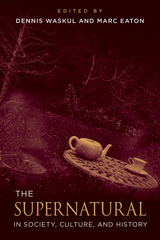
In the twenty-first century, as in centuries past, stories of the supernatural thrill and terrify us. But despite their popularity, scholars often dismiss such beliefs in the uncanny as inconsequential, or even embarrassing. The editors and contributors to The Supernatural in Society, Culture, and History have made a concerted effort to understand encounters with ghosts and the supernatural that have remain present and flourished. Featuring folkloric researchers examining the cultural value of such beliefs and practices, sociologists who acknowledge the social and historical value of the supernatural, and enthusiasts of the mystical and uncanny, this volume includes a variety of experts and interested observers using first-hand ethnographic experiences and historical records.
The Supernatural in Society, Culture, and History seeks to understand the socio-cultural and socio-historical contexts of the supernatural. This volume takes the supernatural as real because belief in it has fundamentally shaped human history. It continues to inform people’s interpretations, actions, and identities on a daily basis. The supernatural is an indelible part of our social world that deserves sincere scholarly attention.
Contributors include: Janet Baldwin, I'Nasah Crockett, William Ryan Force, Rachael Ironside, Tea Krulos, Joseph Laycock, Stephen L. Muzzatti, Scott Scribner, Emma Smith, Jeannie Banks Thomas, and the editors
READERS
Browse our collection.
PUBLISHERS
See BiblioVault's publisher services.
STUDENT SERVICES
Files for college accessibility offices.
UChicago Accessibility Resources
home | accessibility | search | about | contact us
BiblioVault ® 2001 - 2024
The University of Chicago Press




